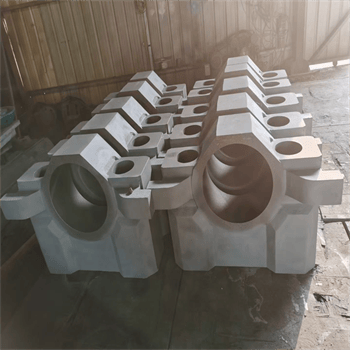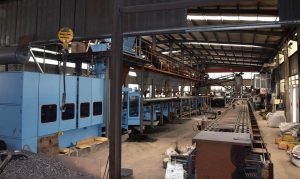Machining, short for machining, refers to the removal of materials by mechanical precision machining process. Modern machining is divided into manual machining and CNC machining two major categories 12. Manual processing refers to operator operating lathes, milling machines, grinders and other mechanical equipment for precision processing of the workpiece, suitable for single-piece, small-batch parts production; CNC machining is the operator to CNC equipment set up the program language, CNC through identification and interpretation of the program language to control the axis of CNC machine tools automatically machining requirements, suitable for large-scale, complex shape parts processing. The specific process of machining mainly car, milling, grinding, pliers, drilling, boring, planing, punching, sawing, as well as electroplating, heat treatment, wire cutting, forging and other methods。
Machined cast iron parts are an essential component in many industries, including automotive, aerospace, and construction. Cast iron is a durable and reliable material that can withstand high temperatures and heavy loads. Machining cast iron parts involves the use of cutting tools to shape and form the material into the desired shape. In this guide, we will explore the benefits of machined cast iron parts, the different types of cast iron, and the machining process.
Benefits of Machined Cast Iron Parts
Machined cast iron parts offer several benefits, including:
1. Durability: Cast iron is a strong and durable material that can withstand heavy loads and high temperatures.
2. Wear resistance: Cast iron is highly resistant to wear and tear, making it an ideal material for parts that experience a lot of friction.
3. Machinability: Cast iron is easy to machine, making it a cost-effective material for manufacturing parts.
4. Corrosion resistance: Cast iron is resistant to corrosion, making it ideal for use in harsh environments.
Types of Cast Iron
There are several types of cast iron, including:
1. Gray iron: This is the most common type of cast iron and is known for its excellent machinability and wear resistance.
2. Ductile iron: This type of cast iron is known for its high strength and toughness.
3. White iron: This type of cast iron is known for its hardness and abrasion resistance.
4. Malleable iron: This type of cast iron is known for its ductility and toughness.
Machining Process
The machining process for cast iron parts involves several steps, including:
1. Design: The first step in the machining process is to design the part using CAD software.
2. Casting: The next step is to cast the part using a mold.
3. Machining: Once the part has been cast, it is machined using cutting tools to shape and form the material into the desired shape.
4. Finishing: The final step in the machining process is to finish the part by sanding, polishing, or painting it.
Applications of Machined Cast Iron Parts
Machined cast iron parts are used in a wide range of applications, including:
1. Automotive: Cast iron parts are used in engines, transmissions, and brake systems.
2. Aerospace: Cast iron parts are used in aircraft engines and landing gear.
3. Construction: Cast iron parts are used in construction equipment, such as bulldozers and cranes.
4. Industrial: Cast iron parts are used in industrial machinery, such as pumps and compressors.
Conclusion
Machined cast iron parts are an essential component in many industries, offering durability, wear resistance, machinability, and corrosion resistance. There are several types of cast iron, each with its own unique properties. The machining process for cast iron parts involves several steps, including design, casting, machining, and finishing. Machined cast iron parts are used in a wide range of applications, including automotive, aerospace, construction, and industrial machinery.
Quality control measures include inspecting the pattern for accuracy, monitoring the sand mixture for consistency, and conducting non-destructive testing on the finished components. By implementing stringent quality control processes, manufacturers can deliver reliable and durable sand casting components to their customers.












-3-300x249.png)


